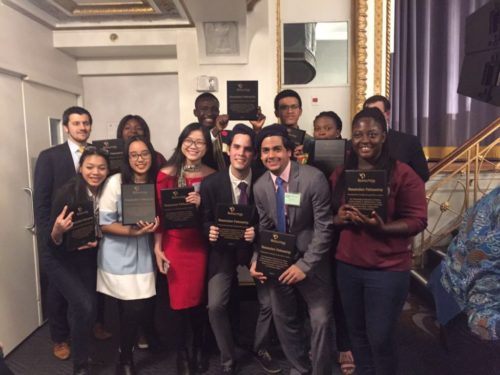
University students receive recognition for their social action projects at The Resolution Project’s social venture challenge during Harvard National Model United Nations.
Model United Nations conferences do a great job in simulating the debates within the United Nations. But most Model UN conferences are missing the implementation component of the United Nations. In real life, the UN is not just a conference to discuss global issues. The UN also coordinates actions between governments and non-governmental organizations to achieve key outcomes from their conferences, such as the Sustainable Development Goals.
Model UN students are often inspired to change the world, so there is more Model UN conferences can do to capture this implementation component and channel student energy into social action projects or political advocacy work. Here are a few examples our team at Best Delegate has observed:
At the university level, Harvard WorldMUN partners with the Resolution Project so that students can get funding and support on their social venture plans. It has produced over 150 Resolution Fellows working across a variety of global issues.
At the high school level, participants at the North American Invitational MUN (NAIMUN) fundraise for a charity every year. The conference has raised an average of over $20,000 each year. This year’s proceeds went to The Malala Fund to support access to girls’ education.
And at the middle school level, Montessori MUN’s in-conference NGO projects have evolved into its own event called the International Youth Earth Summit where teams create their own NGOs and social action plans.
Despite these examples, social action and advocacy are still not mainstream among Model UN conferences. The MUN community could use thematic guidance from the UN on key Sustainable Development Goals to support as well as mentoring and resources from NGOs on how to engage their students into such projects. With the right support, Model UN will not just simulate the UN — it can help the UN achieve its goals, too.


